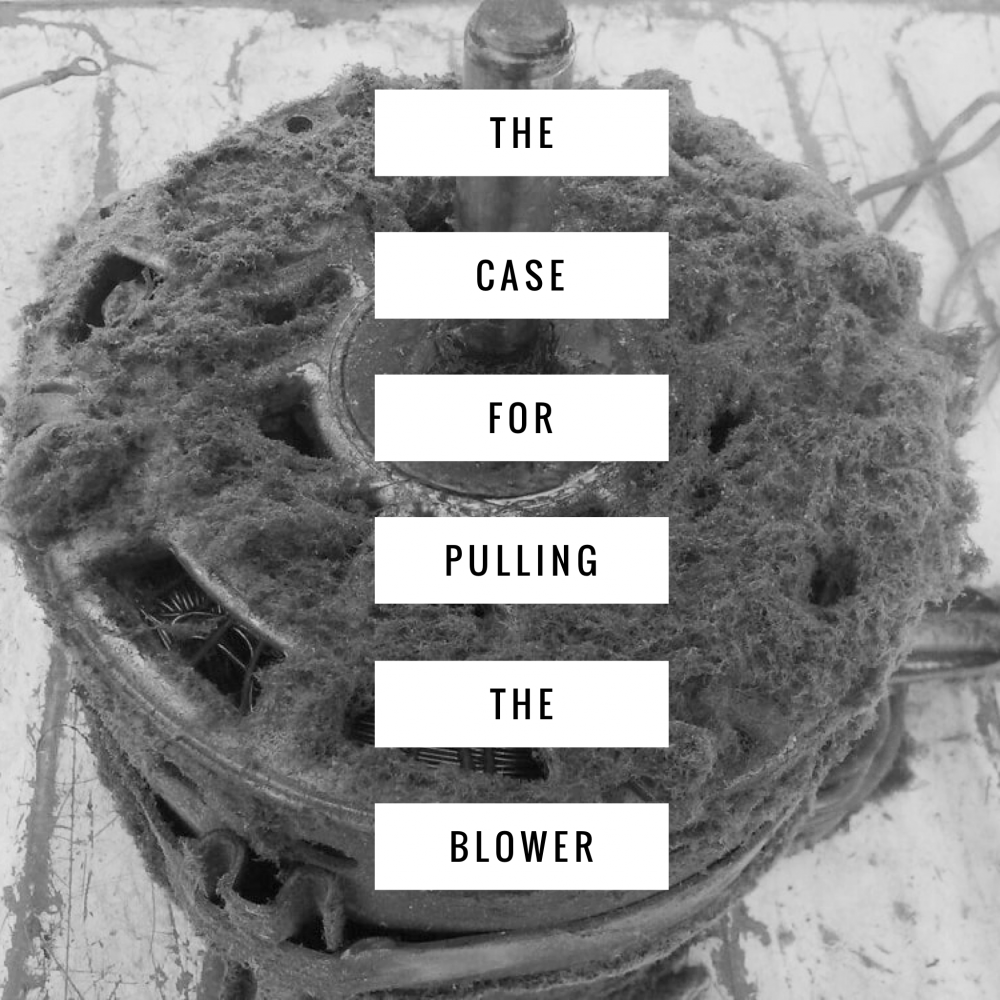Get Tech Tips
Subscribe to free tech tips.
The Case For Pulling The Blower Housing

When I started in the trade in 1999, there were still many oilable blower motors in service. As part of the maintenance, we would remove the housing and oil the motor. We would also vacuum the motor and wipe it down.
As oilable motors have become extinct, I see fewer and fewer techs pulling the blower housing. Here are some reasons you may want to consider doing it more often:
- Cleaning the motor itself can help it run cooler and last longer. A hot motor is not only more susceptible to winding breakdown but also to bearing/lubricant failure. Grab a vacuum, soft bristle brush, and a rag and get the dust buildup off the motor. If you have any dust that gets stuck inside, use some low-pressure nitrogen or compressed air to get it clean.
- Get in there and look carefully at the wheel. A wheel that is even slightly dirty can have a significant effect on air output. If it's dirty, recommend cleaning.
- Check the blower bearings; it's easier to do when the motor is out.
- In high-efficiency furnaces, pulling the blower is a good way to check the secondary heat exchanger. On 80% furnaces, you can check parts of the primary exchanger and even the evaporator coil with a mirror or inspection scope.
- Pulling the blower gives you the ability to wipe down the inside of the furnace or fan coil.
- You can check blower mounting bolts, set screws, and blower alignment. You can also balance more easily.
Obviously, when and why you pull the housing will vary from contractor to contractor, but I advocate it being done more often than it is now.
What say you?
—Bryan











Comments
Excellent! I agree that this practice should be more common. I also thank you for the idea of using my nitrogen instead of compressed air to blow out the motor, as the compressed air often contains considerable amounts of moisture, which can be concerning in itself. Thanks Bryan!
Excellent! I agree that this practice should be more common. I also thank you for the idea of using my nitrogen instead of compressed air to blow out the motor, as the compressed air often contains considerable amounts of moisture, which can be concerning in itself. Thanks Bryan!
Love this article.
So, those “self oiling motors” have that little felt pad in there….on condenser fan motors, I flip it over and oil the shaft area while cleaning out the leaves and debris from condenser. I will start using my spout oiler in blower too. As far as pulling it out, great idea, especially on those Spring maintenances that come from new customers that obviously called for a maintenance because their AC isn’t performing.
I’ve sold a lot of cleanings by using my flashlight ( a high quality light, not a throw away or worse, cell phone light) inside the AHU pointing out all the dirt, etc. ignored by previous techs.
Love this article.
So, those “self oiling motors” have that little felt pad in there….on condenser fan motors, I flip it over and oil the shaft area while cleaning out the leaves and debris from condenser. I will start using my spout oiler in blower too. As far as pulling it out, great idea, especially on those Spring maintenances that come from new customers that obviously called for a maintenance because their AC isn’t performing.
I’ve sold a lot of cleanings by using my flashlight ( a high quality light, not a throw away or worse, cell phone light) inside the AHU pointing out all the dirt, etc. ignored by previous techs.
Pulling the blower on a blocked condensate drain call or low cooling call can allow one to look up into the bottom evaporator coil for cleanliness and to see if blocked condensate poured over the pan and onto the blower and housing.
Pulling the blower on a blocked condensate drain call or low cooling call can allow one to look up into the bottom evaporator coil for cleanliness and to see if blocked condensate poured over the pan and onto the blower and housing.
To leave a comment, you need to log in.
Log In